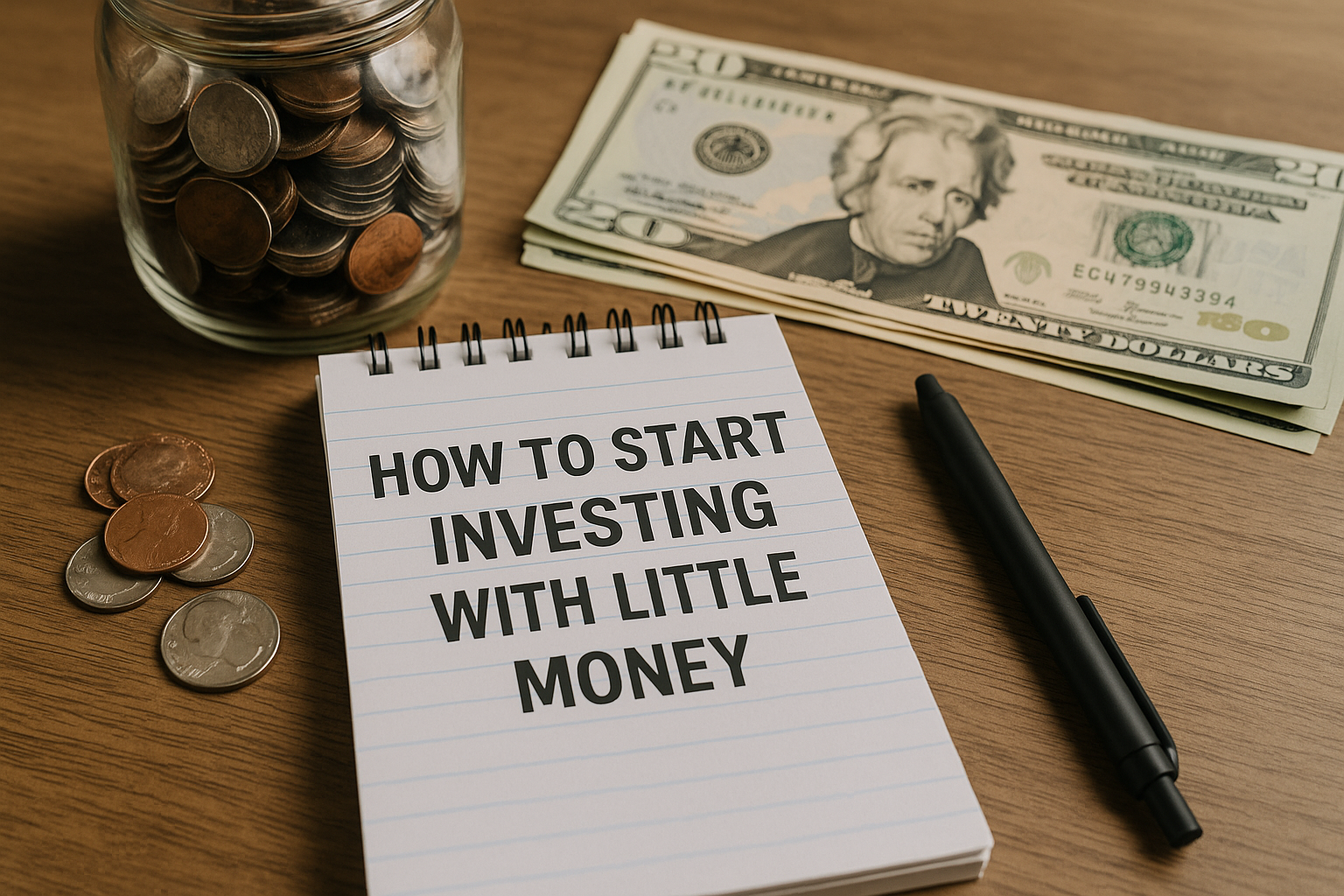Investing is often seen as something only the wealthy can do, but the truth is that anyone can start investing—even with limited funds. Thanks to the digital age, a growing number of tools and platforms are making investing more accessible than ever. In this article, we’ll explore practical steps to help you start investing with little money, build financial discipline, and create a solid foundation for your future.
Why Starting Small Is Still Powerful
Many people hold back from investing because they assume they need thousands of dollars to begin. While a large investment can accelerate growth, starting small has its own powerful benefits:
- Habit Formation: Small, regular contributions help you build consistency.
- Time Advantage: The sooner you start, the more time your money has to grow through compound interest.
- Learning Curve: Investing a small amount lets you gain experience with less risk.
Starting small also reduces the fear factor. You’re not risking a fortune, so it’s easier to stay calm and focused.
Step 1: Define Your Financial Goals
Before you invest, it’s essential to understand why you’re doing it. Are you saving for retirement, a home, education, or simply building wealth?
Setting goals gives you a timeline and helps determine how much risk you’re willing to take. For example, if you’re saving for a long-term goal like retirement, you can afford to take more risks compared to saving for a down payment in two years.
Step 2: Build an Emergency Fund First
Before you start investing, it’s wise to build an emergency fund. This fund should cover at least three to six months of essential expenses. It’s your financial safety net if you lose your job or face unexpected costs.
Why is this important? Because you don’t want to pull money out of your investments during a market downturn just to cover a car repair.
Step 3: Understand Investment Options
Even if you only have $50 to start with, you can still invest in several ways:
1. Micro-Investing Apps
Apps like Acorns, Stash, and Robinhood allow you to invest small amounts—even your spare change.
- Acorns rounds up your everyday purchases and invests the difference.
- Stash lets you invest in fractional shares with as little as $5.
- Robinhood offers commission-free trades with no minimum.
2. ETFs (Exchange-Traded Funds)
ETFs are bundles of stocks or bonds that you can buy in small quantities. They offer:
- Diversification (lower risk)
- Low fees
- Flexibility to start with small amounts
3. Robo-Advisors
Platforms like Betterment or Wealthfront automate the investment process. You answer a few questions, and they invest your money based on your risk profile.
4. High-Yield Savings Accounts
Not technically investing, but a good place to park your emergency fund. These accounts pay higher interest than traditional savings accounts.
Step 4: Start With What You Can
There’s no minimum threshold to develop good habits. You can start with $10, $25, or $50 a month. The most important thing is to start now and stay consistent.
Set up automatic transfers so you’re investing without thinking about it. This helps avoid emotional spending and keeps your goals on track.
Step 5: Be Aware of Fees
If you’re starting small, fees can eat up your returns quickly. Look for:
- Low or no trading commissions
- Low management fees (ideally under 0.5%)
- No account maintenance fees
Compare platforms before choosing where to invest. Many micro-investing apps and robo-advisors are designed specifically for beginners with small budgets.
Step 6: Focus on Long-Term Growth
Investing is not a get-rich-quick scheme. With small amounts, it’s even more important to:
- Invest regularly
- Stay invested during market fluctuations
- Reinvest dividends
The longer your money stays in the market, the more it can grow through compound interest. Small amounts add up over time, especially if you reinvest the profits.
Step 7: Keep Learning
As you grow more confident, continue learning about:
- Market trends
- Portfolio diversification
- Tax strategies
- Retirement planning
Free resources like YouTube, investing podcasts, financial blogs, and online courses can teach you how to level up your investment game.
What to Avoid
- Day trading: Especially with small amounts, it’s risky and often leads to losses.
- High-risk investments: Don’t be tempted by promises of “guaranteed” returns or fast profits.
- Investing without a plan: You need clear goals and strategies.
Final Thoughts: Small Steps, Big Future
Starting with little money may not feel exciting at first, but it’s the first step toward financial freedom. The key is to stay consistent, think long term, and never stop learning. With time, discipline, and smart choices, your small investments can grow into significant wealth.

